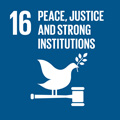- Docente: Piergiorgio Degli Esposti
- Credits: 10
- SSD: SPS/08
- Language: Italian
- Teaching Mode: Traditional lectures
- Campus: Bologna
- Corso: First cycle degree programme (L) in Political, Social and International Sciences (cod. 8853)
Learning outcomes
After completing the course, the student: - will have a basic knowledge of the sociology of communication in its evolution, - knows the main forms and communication functions, as well as the most important theories / schools / research in communications, - have critical knowledge of the phenomena related to communication and media, - knows how to apply the empirical tools of analysis of the communication processes in contemporary society
Course contents
The class aims to describe and analyze the main sociological theories upon the following topics:
- Contemporary society and globalization;
- The sociology of the media;
- Media and socialization;
- Communication and meta communication;
- Production, consumption, prosumerism;
- Sociology of digital media;
- Networked publics: invisible audiences, public/private boundaries, context collapse;
- Social Media and Big Data;
- Actor Network Theory.
A printed detailed syllabus will be provided to students the first day of class.
Readings/Bibliography
- R. Stella, C. Riva, C.M. Scarcelli, M. Drusian (2018), Sociologia dei New Media, UTET, Novara.
- P. Degli Esposti, C. Riva, F. Setiffi (2018), Sociologia dei consumi, UTET, Novara.
- P. Degli Esposti (2015), Essere prosumer nella società digitale. Produzione e consumo tra atomi e bit, Franco Angeli, Milano.
During the semester additional readings will be uploaded on the IOL platform.
Programme integration for non attending students:
- N. Couldry, Media, Society, World: Social Theory and Digital Media Practice, Polity press, London, 2012. (Chapters 1, 2 and 3)
- H. Jenkins, Convergence Culture. When old and new media collide, New York University Press, New York, 2006. (Chapters 1 and 2)
- D. Lupton (2015), Digital Sociology, Routledge, London. (Chapters 2 and 3)
Teaching methods
Lectures, seminars and interactive presentations.
Students are expected to be prepared on the assigned readings before each class.
Participation is expected and rewarded.
Assessment methods
Attending students:
Each week the student will be asked to present a short written paper (at least 5) and during the course to perform at least one individual or group presentation.
A mid-term test will be scheduled.
At the end of the course the student must present a final paper.
The final evaluation is based on the following criteria:
- Active participation in activities, presentation and assignments (30%)
- Midterm Test (30%)
- Final Paper (40%)
Non attending students:
Final exam is made by a written test and an oral exam upon textbooks
Evaluation criteria:
- 50% paper evaluation
- 50% oral exam
Paper has to be 4.000 words 24.000 characters. (around 12 pages), references excluded. Chicago style for citations. Paper must be turned in 5 days before the oral exam.
For every paper 10% rules applies on the number of characters (a length of work higher or lower than 10% is accepted)
To register the final grade is necessary that you enrol in the official dates in the website AlmaesamiTeaching tools
The teaching materials will be available to the students.
All student papers will be verified through the Compilatio.net plagiarism verification system
Office hours
See the website of Piergiorgio Degli Esposti
SDGs




This teaching activity contributes to the achievement of the Sustainable Development Goals of the UN 2030 Agenda.
